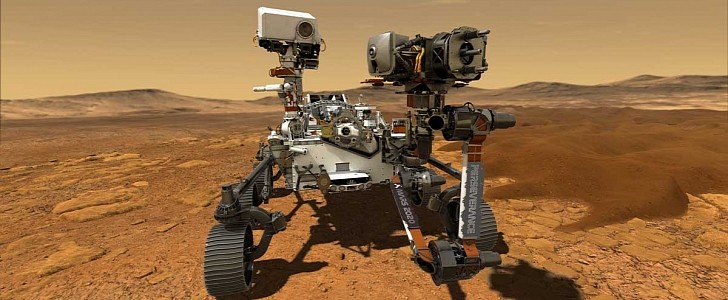NASA's Perseverance rover is taking "the wheels." After being assigned the task of exploring the oldest geologic features in the Jezero Crater on Mars, researchers plan to give the rover more autonomy. That will enable it to navigate around obstacles on its own, giving it a significant boost on its epic journey to find ancient microbial life on the Red Planet.
An advanced auto-navigation system will let Perseverance take charge of the drive by itself. Called AutoNav, this system creates 3D models of the landscape ahead, detects risks, and calculated a route around any obstructions without the intervention from NASA's team here on Earth.
"The rover is thinking about the autonomous drive while its wheels are turning," explains Vandi Verma, a senior engineer at NASA's Jet Propulsion Laboratory.
These capabilities surpass those of Perseverance's predecessor, Curiosity. While the Curiosity rover was also equipped with an earlier version of AutoNav, it was able to drive at roughly 66 feet (20 meters) per hour. The upgraded version of the auto-navigation system allows Perseverance to reach 393 feet (120 meters) per hour. That's almost six times faster than Curiosity.
AutoNav will be a key tool that will help Perseverance complete its science campaign. Instead of going around complex terrains, now the rover will drive through them to collect samples on its quest to find ancient life. It will gather samples from the Jazero crater over 9 miles (15 kilometers) and then prepare them for a future mission to take them back to Earth for analysis.
The AutoNav will confer the rover some sort of autonomy, but the researcher's team will also take part in developing Perseverance's route. Plus, the team will also plan the rover's activity. While Perseverance is "taking the wheel." And drive by itself across the alien terrain, NASA will be ready to intervene whenever needed.
The Jet Propulsion Laboratory has released a video that shows AutoNav in action, helping us see the Martian terrain through the rover's eyes.
"The rover is thinking about the autonomous drive while its wheels are turning," explains Vandi Verma, a senior engineer at NASA's Jet Propulsion Laboratory.
These capabilities surpass those of Perseverance's predecessor, Curiosity. While the Curiosity rover was also equipped with an earlier version of AutoNav, it was able to drive at roughly 66 feet (20 meters) per hour. The upgraded version of the auto-navigation system allows Perseverance to reach 393 feet (120 meters) per hour. That's almost six times faster than Curiosity.
AutoNav will be a key tool that will help Perseverance complete its science campaign. Instead of going around complex terrains, now the rover will drive through them to collect samples on its quest to find ancient life. It will gather samples from the Jazero crater over 9 miles (15 kilometers) and then prepare them for a future mission to take them back to Earth for analysis.
The AutoNav will confer the rover some sort of autonomy, but the researcher's team will also take part in developing Perseverance's route. Plus, the team will also plan the rover's activity. While Perseverance is "taking the wheel." And drive by itself across the alien terrain, NASA will be ready to intervene whenever needed.
The Jet Propulsion Laboratory has released a video that shows AutoNav in action, helping us see the Martian terrain through the rover's eyes.









